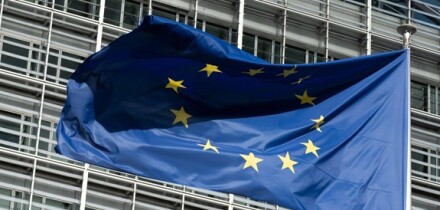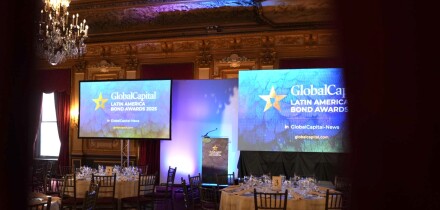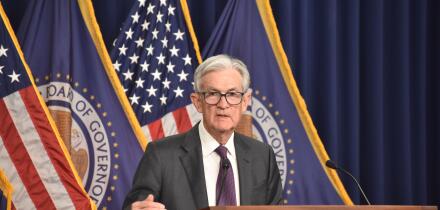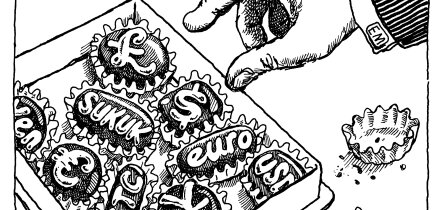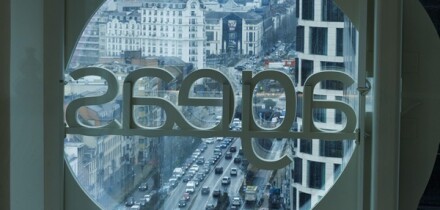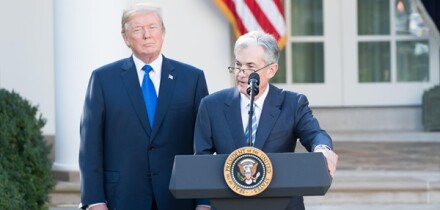To benefit from the next bull-run, investors are on the lookout for the bottom of the market. Historically speaking, an upward trend has nearly always followed major shocks, such as the Cuban Missile crisis, JFK's assassination, the Kuwait invasion and the Russian crisis. It is possible that the trend over next year may also be upwards as major central banks cut interest rates and most countries implement fiscal easing policies in the aftermath of the Sept. 11 attacks. However, many analysts believe that further dips in the equity markets and continued high volatility may be seen next year before the upward trend becomes obvious.
Picking the exact bottom of the market can be rewarding. Since 1960, there have been nine major troughs in the Standard & Poor's 500, having declines of minus 24% on average. Immediately following these lows, the average 12-month gain was an impressive 28%. However, given the current severe volatility in the market, finding the exact bottom is a serious challenge. This is why a lookback structure that strikes at the lowest point of the year might be an interesting proposal for clients who want to re-enter the equity market at the optimal time.
Lookback structures on standard indices have been common practice in the over-the-counter derivatives market, but Deutsche Bank's Xavex Best of 2002 Certificate is the first where lookback opions are offered on a proprietary outperformance index. This certificate offers exposure to global blue-chip equities, through a dynamically rebalanced index, at the lowest point of 2002. The final redemption value of the certificate will reflect the percentage change of the index from the lowest monthly average index level in 2002 year to the final index level at maturity in eight years.
The underlying index, dubbed the GlobalOpportunity Index by Deutsche Bank, selects 21 stocks from the U.S., Euroland and Japan on a semi-annual basis based on a low PEGYY ratio. The "PEGYY-ratio" is defined as the Price to Forecast-Earnings Ratio divided by the sum of the EPS Growth Rate, the Dividend Yield and the Share Buyback Yield. The currency risk is eliminated as the index is quantoed into euros, i.e. it is linked to the price appreciation of the underlying stocks measured in local currency, instead of in euros.
The after-tax dividend yield of the underlying index is approximately 1.3%. This means roughly 8.6% potential dividend income loss from the index over eight years in present value terms.
How Much Could Investors Gain
With Lookback Options?
The lookback feature allows investors to enter the market at the lowest monthly average index level. Based on backtesting on the GlobalOpportunity Index, on average, the lowest monthly average index level has been 17.8% below the highest monthly average index level and 7.8% below the annual average index level. Additionally having the lookback options structured on the GlobalOpportunity index gives you 5.9% annual outperformance versus the MSCI world index with the dividends reinvested. Finally, the certificate could potentially bridge the gap between the long-term opportunity cost of not being invested in the equity markets and the short-term cost of a possible further market correction.
There are several parameters that could influence the value of the certificate as summarized in Figure 1 above. The volatility will cease to influence the certificate value after 2002 when the strike level has been determined.
Historical backtesting shows that the structure generally moved in line with the underlying but with less volatility. It also appeared more defensive on the downside. This demonstrates the wealth preservation feature of the product.
All factors being equal, a hypothetical value of the certificate, before fees, at the beginning of 2003 can be estimated. This is because after the strike level has been determined, the certificate on 1/1/2003 simply becomes a seven-year quanto forward on the index. As you can see from Figure 2, the higher the index value on 1/1/2003 or the lower the lowest monthly average index level in 2002, the higher the certificate value will be.
How Can Firms Hedge This
Path-Dependent Structure?
The structure can be approximately broken down into:
1. An eight-year quanto forward on the index (with index level on the issue date as the initial index level)
2. A one-year variable-notional fixed-strike lookback put (with the strike being set at the lookback period start, for simplicity the issue date) multiplied by the hedge ratio which is . This can be proven as follows.
(Where ST: Index level at maturity; : Index level on the issue
date, SLB: Strike level; the lowest monthly average index level in the 1-year lookback period.)
As we can calculate the theoretical value of the ST, the eight-year quanto forward of the index, (being a function of the initial index level, dividend yield, risk free interest rates in the U.S., Euroland and Japan, volatility of the foreign exchange rates and of the underlyings, and correlation between the foreign exchange rates and the underlyings etc.), the theoretical hedge ratio: ST/ S0 can be derived.
Therefore the hedge of the structure simply comes down to hedge a short position in an eight-year quanto forward and a one-year lookback put with the proper hedge ratio. The approximate fair value of the variable-notional fixed-strike lookback put could be solved analytically, and we can do standard hedging on it according to various greeks--delta, gamma, vega and correlation risk. There are also different types of synthetic hedging techniques used in the market such as to use a series of strike-reset plain-vanilla puts.
If the lookback option is offered on a proprietary index a proxy index basket should be used for hedging where liquid futures and options are traded. The tracking error resides within the trading book.
This week's Learning Curve was written by Karen Xuan Fang, v.p. and senior product developer at global equity derivatives at Deutsche Bank in London.
